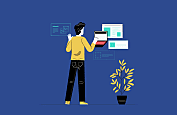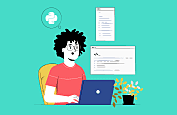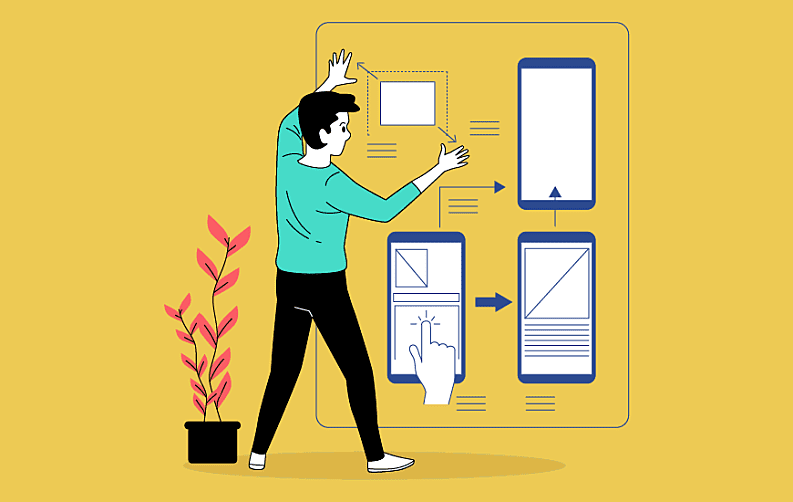
Today, mobile applications have taken over almost everything from day to day tasks to cardinal enterprise operations. Everyone is pleased with the evolving rulership of mobile app technology in the digital world. However, for building an app from scratch not everyone has the answer to the question “How to build mobile apps?”.
App making is a tedious process and consists of multi-stage steps on how to create an app that need to be practiced with detailed knowledge about the app development cycle. In case you are stepping up to the app for your business you should know the different stages of the mobile app development cycle.
How to Build Mobile Apps? - 8 Steps to Creating an Application
There are basically 8 steps to building an app you need to go through one by one at a time in order to build a great app. This article will enlighten you about the whole process of building mobile apps with brief information about each step.
1. Detailed Research and Pre-Planning

This is very the first and crucial step of the development cycle as it will shape the forthcoming process of mobile app development. In this phase, all you need to do is research and find answers relevant to your app idea. You need to decide the main aim and agenda of the app and find answers like:
- Who is the targeted audience?
- What are they specifically looking for?
Along with these, you also need to choose which platform you want to hit and the revenue model of the app. Most importantly, you need to research the competitors' existing product and look for the answers to the questions like:
- How does it work?
- What does it offer to the customers?
- What are the key aspects they are lacking in?
- What can I offer to beat the competition?
Comprehensive research should be done in this phase which includes users, competitors, product, aim, pain points, and services that will give you an idea about capital and time investment.
Ideas for Brainstorming an App Idea!
- Adoption of the already existing
There is no issue in adopting something that already exists. The idea here is to create something that is better. Think about this, wheels were initially made of stone, then wood, and now a combination of alloy & rubber. Just like this, every existing app idea has room for improvement, figure that out.
- Look inside your Mind Palace
Majority of original ideas stem from our own thoughts. A problem that you are struggling with on a daily basis. Take these questions into note:
- Can this idea be solved using an application?
- Is it a niche problem? Or is it something that exists on a large scale?
Once you are done with this, you will get something to work upon. To get the idea further validated, approach any mentor who you think gives the best advice.
- Be Aware of the Socials
Social media can be a great place to look up for new app ideas. There are billions of people voicing their opinions on a daily basis. There are so many problems that get exposition online. Look for these problems, and try to come up with an idea that can solve it.
- Enhance the already existing
I know the titles are getting repetitive but think about this, there are so many basic applications that provide utility on a daily basis. For instance calculator, calendar, notepads, etc. Think of a unique way of serving it to the world. Something that entices people and compels them to use your app. For example, an interactive calculator for small childrens to learn.
- Think about the Future
Look for the latest trends in technology. Learn about what is going to shape up the future. Currently in IT, AI based technologies, VR, AR, Metaverse, etc, all of these are getting a lot more attention. One may not see integration of these techs but it is the future. It won’t be a farce to say that single units of organizations will have employees from all over the world, working as a single unit using a combined space in metaverse. There can be many other ideas similar to this that can be made into reality. Think novel, think about disruptive!
2. Conceptual Prototyping
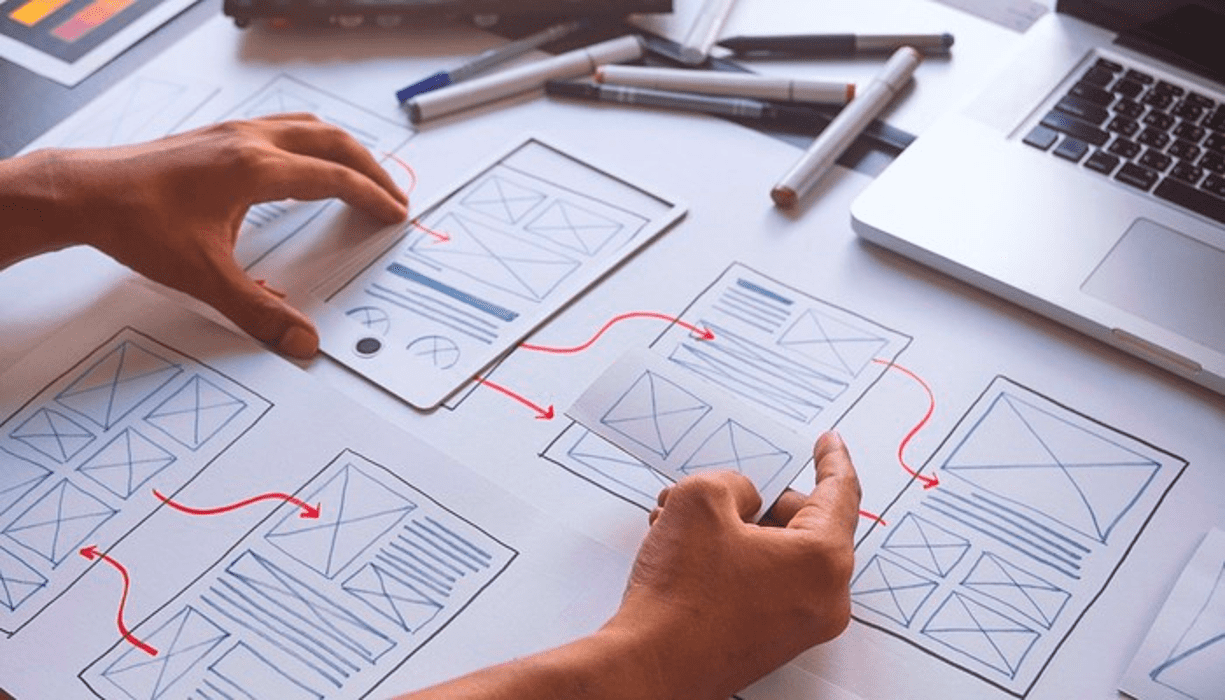
When you have all the research done and got the direction to take your idea on the road of app development, you need to stop at the second phase. The research will give the estimate investment of time and money needed in the process of mobile app development.
Now make a prototype of your product using the research details and explore your idea. Write down all the functionalities & features, and draw a sketch or flowchart on board. This will be the first representation of your ideas and details gathered in the first phase.
Also, try to discuss its attributes and functionalities with other team members, listen to their opinions and views what they think about the primary mental prototype. You need to see it from their point of view. Doing this, you might get some unique app idea and the redundancies to watertight the app idea.
3. Technology Viability
You have an idea and a whole working flowchart with you which is exceptional but is it possible to turn it into reality? Having all the functionalities and operations on the paper is one thing and converting it into a fully working model is different. You need to check the back end technology assessment and understand the possibility of your vision with the app.
At this point, you should know whether the back-end system will support the app APIs or not. To know exactly your app idea is technically feasible you need to access the public APIs.
There are attributes to the adoption of the technology as well. For instance:
- The type of application you want to create i.e. native app, web app, or cross-platform app, etc.
- Requirements for the UI/UX vision of the app
- Initial capital serving the cost to develop an app
- Availability of resources. From a tech perspective (i.e. programming language, suitable frameworks, etc.) and number of resources i.e. manpower required
Certain technologies are well-adopted in the technology spectrum. For instance, it is easy to find custom software development companies in the USA for React Native framework, whereas for Flutter, the market is still developing. It is because React Native uses Javascript while Flutter uses DART. DART is both less popular and a language with a higher learning curve. Similar to this, it is important to look at the entire technology stack. This will also help understand the true feasibility of developing the intended features.
Adding to it, choosing a technology framework that is popular will help find experienced developers with a less quoted pricing bracket. It also means that there are more options in the market to replace the existing resource due to any unforeseen reason.
4. App Design before Development
Before going to start coding for the development you should be aware of the design of the app. A unique and immersive design catering well to the app idea should be structured in order to serve best to the user. A user experience designer will build and design elements required to enrich the app interaction. Designing is a complex process of mobile app development and needs to be done precisely with the aim to provide enhanced interaction to the users. The final results that you will get are blueprints or visual directions that will give you an idea of how your app should look and feel.
Here are some tips to come up with a compelling design:
- Think from the End-User Perspective
It is important to understand this in the research stage. Understanding the target market is a great way to enhance the UX of the app design. Consider this, an app for preschoolers and a person in his/her old age can not respond well to just any design architecture. On the other hand, Gen Z are well-versed with technology and adapt to almost every design architecture. However, they are picky.
Once you have that in place, think about:
- How will the user navigate from one page to the next and the last page?
- How is the user going to interact with the target page?
Think from the perspective of ease and do not rush it!
- Choose a Brand Representing Color Palette
Every color has its story and every startup does too. Pick a color palette that represents your company’s story or vision. Think from the perspective how does that color make you feel? Take a palette of no more than 3 or max colors. However, this is not a mandatory rule considering if you are looking for something vibrant. Although, keeping things to minimal is often recommended.
- Maintain Consistency
Chaos within constraints can often be fun. However, if you aren’t explicitly looking for chaos, maintain an even consistency to establish a brand image. A great looking page followed by a substandard design or feature flaws, isn’t acceptable. Keep note, user experience is everything.
- Pick a Readable Font
Keeping things fancy is good, and there are multiple fonts that may seem enticing. However, the perspective of an app design is to get the message across. With an attractive font that isn’t readable, isn’t ideal. To keep the design fresh and readable, experiment with different fonts and see how they feel. Although, if your theme feels like it requires a fancy font then go ahead.
- Again, Think from Ease!
The user experience shouldn't be cumbersome. For instance, there are several applications in the market that are great but are bloated with too many user actions. For instance:
- Sign-in pages
- Pop-ups
- Ads on website
In fact, there are websites online that work absolutely fine but their payment gateways are hard to figure out. An app is a channel to sell a service. And now think of this calamity. This shouldn’t happen. The purpose of the app should be to provide maximum value to the user, and payments should be easy if the end-user is looking to make in-app purchases.
5. Actual Prototype
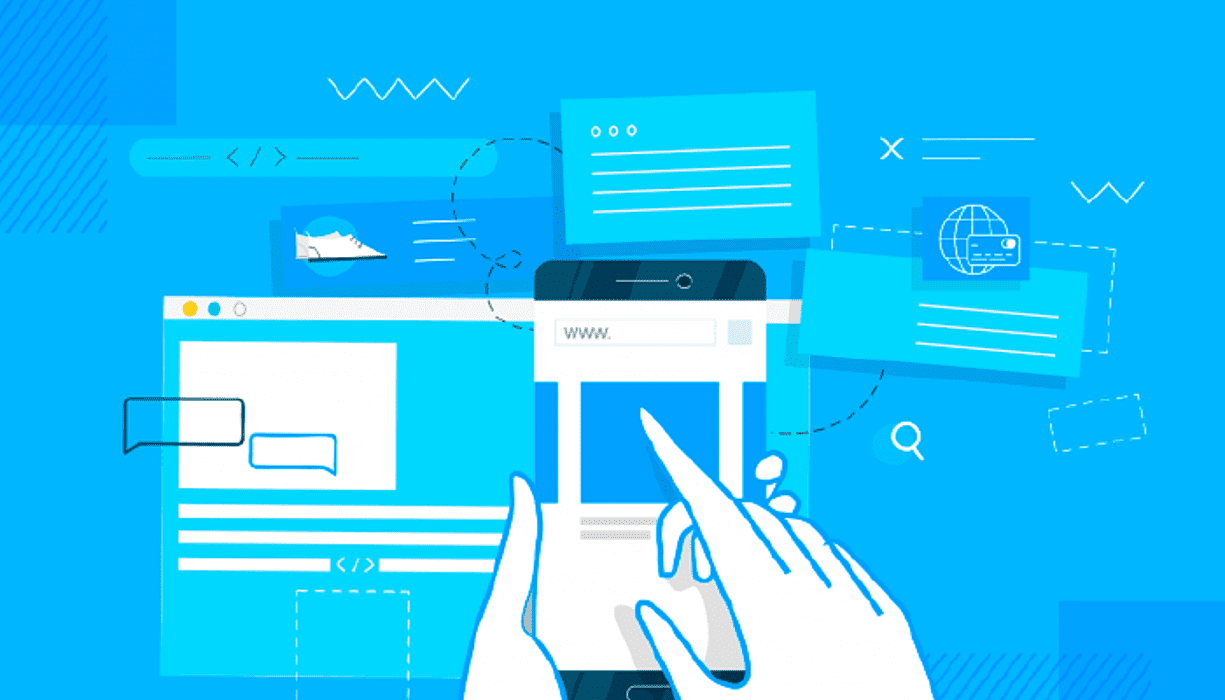
An application is a digital tech element. You won't be able to know it until you actually touch the app on your smartphone. Now, you need to build a real prototype or MVP (minimal viable product) of your app to experience how it works and interact with the users.
Another aspect of doing this is to gain initial capital. A majority of software development companies in the USA and in other corners of the world also follow the culture of building a mobile app prototype to acquire seed funding from venture capitalists. You can use the simple and not comprehensive wireframes so that you can get the app development in less time and also with quality. Rendering the first copy to the client will further let you know that the app is fine or it needs changes.
Bonus for you!
Here are some tips to follow for coming up with a compelling design -
- Highlight the USP of the app. Even if it isn’t feasible to create the feature, add it on the app design, and explain it to the investors
- Add elements that will be added later on. However, have a logical explanation, how they will be realized
- Test out the user experience. UX should give out the taste of the actual app experience
- Keep the true colors of the brand
6. Developing the App
Now, you are at the core phase of app development for business, i.e., coding. You have all the details with all possible functionalities and design. In this phase, the development team will start working to create the app on the decided app development platforms.
There are several project management approaches to complete the app development process on time such as:
- Agile: It is the most popular project management methodology. Agile methodology works on pre-established principles. These principles convey the idea of: Individual and their interactions, working of the software, collaboration with customers, upgrades, etc. It is ideal for projects with high-level uncertainty.
- Scrum: Scrum is ideal for small teams (smaller than 7) that require a flexible methodology to hit the deadlines. It works on role based responsibilities such as scrum master, product owner, development team, etc. Each of these roles focuses only on their tasks, and makes sure the work is done on time. There are other attributes of scrum as well such as: sprint, sprint planning, sprint review, daily sprint, etc.
- Kanban: Kanban methodology is a Japanese methodology that uses some general practices to remove bottlenecks from the workflow. These are: visualization of the workflow, redundancies, flow, feedback, etc. It is another ideal methodology for small teams or individual projects. The idea behind Kanban is to establish visual cues that explains various stages of mobile app development process i.e. Kanban Cards, Kanban Boards, and Kanban Swimlanes.
- Lean Methodology: Another Japanese methodology that originated from Toyota. It works on the elimination of three types of waste from operations i.e. the 3Ms. These are: Muda, Mura, and Muri. Muda refers to the elimination of processes that don't add value to the process or workflow. Mura stands for removing discrepancies from the workflow for scheduling problems. Muri refers to removing the extra burden the teams, managers, or individual employees must be facing. These are prominently followed in manufacturing, however, apps might follow this methodology post development to upgrade apps. Also, it is ideal for something that is created from the perspective of ever-evolving.
Just like these methodologies, there are several others too. For example Waterfall model, Six Sigma, and PMI/PMBOK. The idea is not to know as many methodologies as possible or apply as many as possible (in fact stay away from the latter part). However, the idea is to establish a methodology that will help you accelerate the development process. Also, this methodology should take advantage of the strength of the app development team.
7. Testing
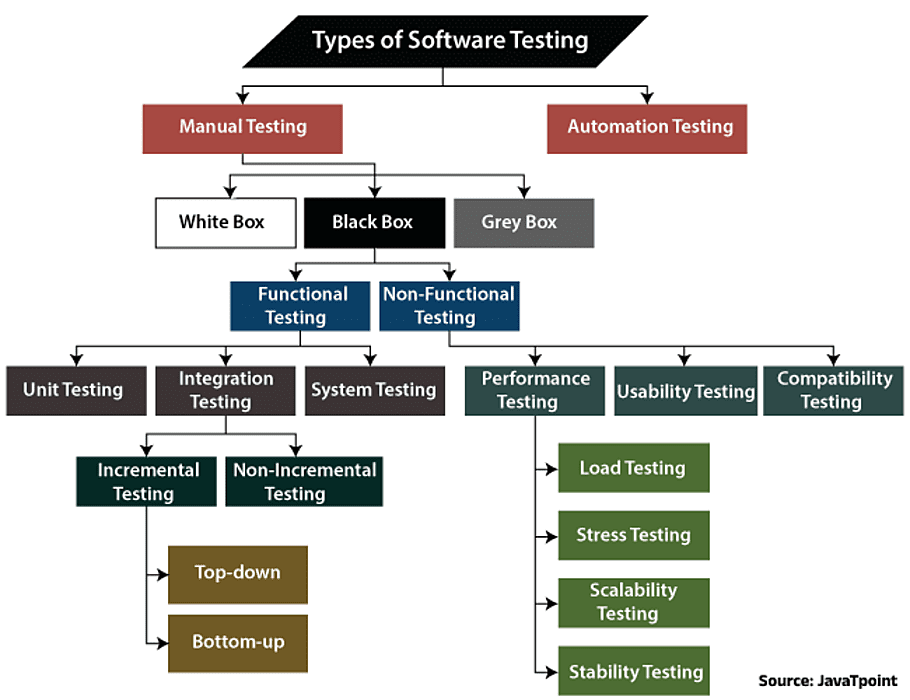
At this phase, you should be done with the coding part. Next comes the testing process. The app needs to be handed over to quality analysts for the initial phase of testing. Post that running a beta test of the app including real-users gives out multiple insights on improvement. UAT- The best way to know if your app is serving the desired service to the users or not. The testing phase also includes Beta Testing, which is a proven technique to test your app by the user.
Make sure your app is available to the users for open participation. The beta version will help you get the users' opinions and feedback directly. This feedback will help you to add what your app lacks from a user point of view before launching it. This is one of the reasons why you need to go through all the mobile app testing phrases.
8. Final App Launch
Congrats your app is ready and there is only one last step left in order to deliver it to the users. You need to submit your app to the respective app store for approval. Before submitting the app, make sure you follow all the regulations and guidelines of the App Store and all the improvisation has done. This is the final step of the app development process.
However, it's not the end, every app needs regular updates in order to fix the bugs and enhance the features. Frequently releasing an upgraded app version with some added features engages the user for a longer period of time.
Ending Note:
Once you understand all the key steps to develop a mobile app, you'll be able to deliver a flawless, robust and up to the mark app to your end-users. Finding the answer to “How to build mobile apps?” is the first step to creating mobile apps that work. So, if you want your app to reach out to more customers, make sure that you follow each step cautiously.
Are you looking for the top mobile app development companies to pursue your dream of creating mobile apps? If yes, we have provided the best resources to do so!
Frequently Asked Questions
-
What do you need to make an app?
In order to learn how to create an app, refer to the article. However, a consolidated version of that would be ideation, research for relevance, prototyping, designing, creating the build, and publishing.
-
What are some common app development lifecycles?
-
What are the different stages of mobile app development life cycle?
-
What are the different phases of the app development process?









